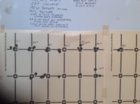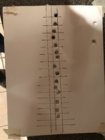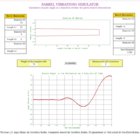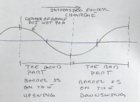Is there any pros or cons when choosing accuracy nodes i know every rifle is different but if all nodes shoot really good which one is the better option. Tight neck 7mm rem mag with h1000 federal 215m . Both the 180 hybrid and 180 eld-m shoot damn near exactly the same at 200. Nodes 58-59. 63.5-64.5. 66-67. I'm shooting out of a 30" benchmark MTU 1-8" twist. Any help is appreciated
Install the app
How to install the app on iOS
Follow along with the video below to see how to install our site as a web app on your home screen.
Note: This feature may not be available in some browsers.
You are using an out of date browser. It may not display this or other websites correctly.
You should upgrade or use an alternative browser.
You should upgrade or use an alternative browser.
Choosing accuracy node
- Thread starter anaconda
- Start date
Is there any pros or cons when choosing accuracy nodes i know every rifle is different but if all nodes shoot really good which one is the better option. Tight neck 7mm rem mag with h1000 federal 215m . Both the 180 hybrid and 180 eld-m shoot damn near exactly the same at 200. Nodes 58-59. 63.5-64.5. 66-67. I'm shooting out of a 30" benchmark MTU 1-8" twist. Any help is appreciated
how is your brass holding up in the higher node. i usually back off a little for brass life. now if you need the velocity for long range you may be willing to give up brass life and burn the barrel out a little quicker.
how is your brass holding up in the higher node. i usually back off a little for brass life. now if you need the velocity for long range you may be willing to give up brass life and burn the barrel out a little
Not sure on brass life. My last barrel I used the lowest charge node it shot the smallest groups I ever shot down range but carbon fouling was really bad.
NorCalMikie
Gold $$ Contributor
You'll probably get two nodes. One high and one low. I prefer the lower node. Temp changes from when you loaded that ammo to when you go shooting.
Lower node gives you more "wiggle room". No high pressure problems and less stress on your brass.
Lower node gives you more "wiggle room". No high pressure problems and less stress on your brass.
GSPV
A failure to plan is a plan for failure.
If that is one of those places that I label "the good part" in the graph above, that is where each increasing powder charge moves the group down the page, I would pick the powder charge right in the middle of it. That's the place that is the most tolerant of temperature change.
Looking at your figure, you say that the "good part" is where the barrel is on the upswing. The POI is going down w/ increasing charge so would that not mean that the barrel is on the downswing here?View attachment 1054644 Ok. You may have this covered, but just checking.
You want to be in a place where increased powder charge causes a lower POI on the target.
GSPV
A failure to plan is a plan for failure.
No. When the barrel is on the upswing, increasing velocity will cause the bullet to leave earlier and, thus, be started in a lower trajectory.
This is what you want. You want slower rounds to be started on a higher trajectory and faster ones to be started on a lower trajectory.
This is what you want. You want slower rounds to be started on a higher trajectory and faster ones to be started on a lower trajectory.
Is there any pros or cons when choosing accuracy nodes i know every rifle is different but if all nodes shoot really good which one is the better option. Tight neck 7mm rem mag with h1000 federal 215m . Both the 180 hybrid and 180 eld-m shoot damn near exactly the same at 200. Nodes 58-59. 63.5-64.5. 66-67. I'm shooting out of a 30" benchmark MTU 1-8" twist. Any help is appreciated
I’ve loaded the same bullets for a 7 mag and at 67 gr of H1k you are at the low node. All rifles are different but I usually ended up at 69.5-71
GSPV
A failure to plan is a plan for failure.
 There is no explicit time axis.
There is no explicit time axis.As labeled, the vertical axis is the vertical position of the group relative to point of aim while the horizontal axis is increasing powder charge.
A few grains, or even tenths of grains, of powder will *absolutely* cause the group to go from marching down the page to marching up it.
I have a better picture of this somewhere. I’ll try to find it when I get back to my desk and my reading glasses.
Edit: only look at the top line of shots. The lower line are something else. Also, see the picture that I posted below.
Last edited:
What kind of brass are you using? I'm using Norma brass I stoped at 67.5gr no signs of pressure but load data said 69.5gr was max with Winchester brass so I wasn't sure how much I should reduce charge to compensate volume difference.I’ve loaded the same bullets for a 7 mag and at 67 gr of H1k you are at the low node. All rifles are different but I usually ended up at 69.5-71
GSPV
A failure to plan is a plan for failure.
 Ok. Here is the better graphic.
Ok. Here is the better graphic.Vertical POA is always the center of the three horizontal lines, but advances by one vertical line per shot.
Each time I advance to the next POA, I am advancing my tuner (which is like changing powder charge) by a small increment.
You can easily see the graph make a sine wave.
GSPV
A failure to plan is a plan for failure.
And while I’m at it, you can see the same thing happen with constant POA and constant powder charge as *temperature* changes.
When short range benchrest shooters are talking about chasing the tune, that’s what they are talking about.
Simplifying a few things, they are adjusting powder charge so that the barrel is centered in “the good side”.
Simplifying even a tad more, you can think of it as, once the tune is found, adjusting powder charge to maintain constant velocity.
This is because velocity is an approximation of bullet exit time.
When short range benchrest shooters are talking about chasing the tune, that’s what they are talking about.
Simplifying a few things, they are adjusting powder charge so that the barrel is centered in “the good side”.
Simplifying even a tad more, you can think of it as, once the tune is found, adjusting powder charge to maintain constant velocity.
This is because velocity is an approximation of bullet exit time.
I think the diagram time increases from right to left. Backwards from the norm. It shows the muzzle angle moving down in the "good" part, up in the "bad" part.
The concept is good but I doubt a few grains of powder will shift the bullet exit point 180 degrees on the muzzle angle vibration cycle.
A .2 millisecond change in barrel time equates to about 12 percent change in muzzle velocity. The muzzle axis vibration frequency is always the same for a given barrel profile regardless of bullet's velocity.
The concept is good but I doubt a few grains of powder will shift the bullet exit point 180 degrees on the muzzle angle vibration cycle.

A .2 millisecond change in barrel time equates to about 12 percent change in muzzle velocity. The muzzle axis vibration frequency is always the same for a given barrel profile regardless of bullet's velocity.
Last edited:
dmoran
Donovan Moran
Where did you get or how did you come up with that percentage?... A .2 millisecond change in barrel time equates to about 12 percent change in muzzle velocity. ...
And for what velocity levels (calibers) is that based off?
I have many pressure trace results from 243 to 300 caliber rifles that refute that high of percentage in velocity being needed to change bullet exit time by .2-milliseconds. Where to say, moving the charge level a few percent, and the seating depths, can change exit time .2-m/s from far less velocity change.
Last edited:
GSPV
A failure to plan is a plan for failure.
I think the diagram time increases from right to left. Backwards from the norm.
This post seemed to move in the thread, so I’m posting again to clearly reply.
No. There is *no* time axis in my original graph. The vertical axis is vertical POI. The horizontal is powder charge, and increases left to right.
Kinda.It shows the muzzle angle moving down in the "good" part, up in the "bad" part.
.
It shows that point of impact moves up and down the target just a bit with change in powder charge.
I, and many others, claim this happens due to changing muzzle angle during its oscillation.
I, and many others, claim that we want to tune such that we are in the portion of the graph where POI moves down the target with increasing powder charge. We call this “positive compensation”. That is, it tends to compensate for the inevitable small errors in bullet exit whereas being in “the bad side” actually aggravates those small, inevitable, errors. I mean, we’ve all seen our groups get really awesome and then suddenly blow up in the vertical.
Well, I’ve posted two pictures showing empirical evidence that it does and this closely follows the experience of that we have every day long tournament when we “chase the tune”.The concept is good but I doubt a few grains of powder will shift the bullet exit point 180 degrees on the muzzle angle vibration cycle.
.
You seem to think that this is some new-fangled idea. It’s not. It’s just me communicating well-established common knowledge.
Positive compensation is when a given load's muzzle velocities are such that faster bullets leave at a lower muzzle angle than "slower" ones. I've studied this century plus old fact for decades. It's based on a load's velocity spread versus muzzle angle on exit. Not a load's average velocity that changes average POI change.
Edited bolt face font
Edited bolt face font
Last edited:
Similar threads
- Replies
- 7
- Views
- 1,329
- Replies
- 57
- Views
- 3,497
- Replies
- 5
- Views
- 3,685
Upgrades & Donations
This Forum's expenses are primarily paid by member contributions. You can upgrade your Forum membership in seconds. Gold and Silver members get unlimited FREE classifieds for one year. Gold members can upload custom avatars.

Click Upgrade Membership Button ABOVE to get Gold or Silver Status.
You can also donate any amount, large or small, with the button below. Include your Forum Name in the PayPal Notes field.
To DONATE by CHECK, or make a recurring donation, CLICK HERE to learn how.

Click Upgrade Membership Button ABOVE to get Gold or Silver Status.
You can also donate any amount, large or small, with the button below. Include your Forum Name in the PayPal Notes field.
To DONATE by CHECK, or make a recurring donation, CLICK HERE to learn how.










